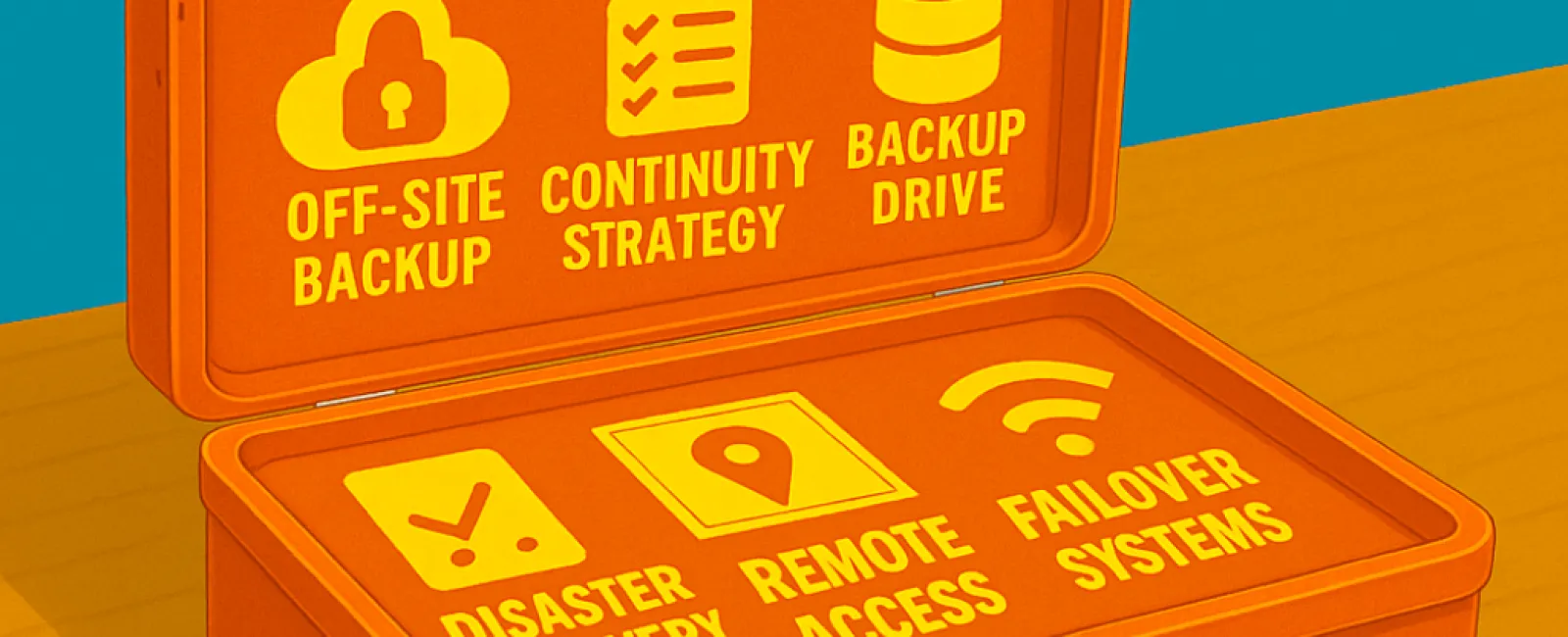July 28, 2025
Here's where a lot of businesses get it wrong:
- Backups = Restore data
- Continuity = Stay operational
A strong continuity plan covers:
- Encrypted, off-site, and tested backups
- Recovery timelines (RTO/RPO) so you know what's critical
- Remote work readiness
- Redundant systems and automatic failovers
- Regular disaster simulations to make sure the plan actually works
And most important: everyone knows their role when things go sideways.
"Will This Actually Happen to Me?"
Short answer? Yes.
Real talk from the field:
- Florida hurricanes shut down offices for weeks—only those with cloud access kept rolling.
- Floods in North Carolina wiped out months of financial data.
- California wildfires leveled entire buildings—without off-site recovery, those businesses were gone.
Ransomware's hit close to home too. Some had backups… but no one had ever tested them. They didn't work when it mattered.
This isn't scare talk. This is everyday reality.
Questions to Ask Your IT Provider Right Now
- If ransomware hits tonight, how fast can we bounce back?
- Are our backups tested—and are they all tested?
- What if our office floods or loses power?
- Can my team go remote at a moment's notice?
- Is our plan compliant with the rules for our industry?
If you don't have clear, confident answers to these—you've got a risk. And it's bigger than you think.
Disasters Happen. Downtime Doesn't Have To.
You can't stop a storm, a fire, or a cyberattack. But you can build a plan that keeps your business on its feet while others are scrambling.
Click here to book your FREE Network Assessment
We'll help you figure out what's solid, what's missing, and how to keep your business running—no matter what.
A good IT provider helps you recover.
A great one makes sure you never skip a beat.



